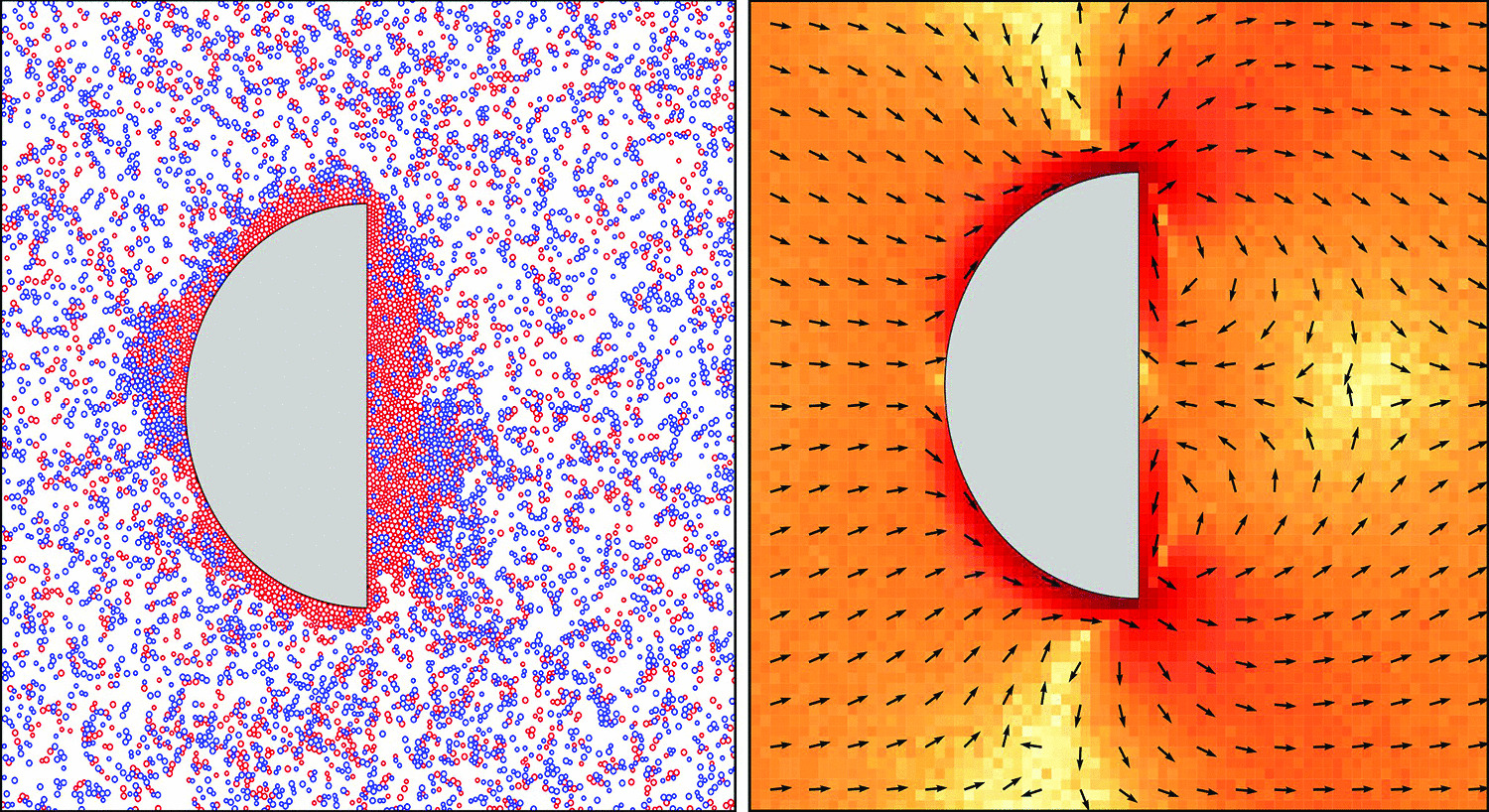https://doi.org/10.1140/epje/s10189-023-00354-y
Regular Article – Flowing Matter
Mixtures of self-propelled particles interacting with asymmetric obstacles
1
Institute of Science and Technology Austria, Am Campus 1, 3400, Klosterneuburg, Austria
2
ICTP South American Institute for Fundamental Research and Instituto de Física Teórica, Universidade Estadual Paulista - UNESP, 01140-070, São Paulo, Brazil
3
Departamento de Física, FCFM, Universidad de Chile, Avenida Blanco Encalada 2008, Santiago, Chile
Received:
2
June
2023
Accepted:
22
September
2023
Published online:
11
October
2023
In the presence of an obstacle, active particles condensate into a surface “wetting” layer due to persistent motion. If the obstacle is asymmetric, a rectification current arises in addition to wetting. Asymmetric geometries are therefore commonly used to concentrate microorganisms like bacteria and sperms. However, most studies neglect the fact that biological active matter is diverse, composed of individuals with distinct self-propulsions. Using simulations, we study a mixture of “fast” and “slow” active Brownian disks in two dimensions interacting with large half-disk obstacles. With this prototypical obstacle geometry, we analyze how the stationary collective behavior depends on the degree of self-propulsion “diversity,” defined as proportional to the difference between the self-propulsion speeds, while keeping the average self-propulsion speed fixed. A wetting layer rich in fast particles arises. The rectification current is amplified by speed diversity due to a superlinear dependence of rectification on self-propulsion speed, which arises from cooperative effects. Thus, the total rectification current cannot be obtained from an effective one-component active fluid with the same average self-propulsion speed, highlighting the importance of considering diversity in active matter.
Supplementary Information The online version contains supplementary material available at https://doi.org/10.1140/epje/s10189-023-00354-y.
Copyright comment Springer Nature or its licensor (e.g. a society or other partner) holds exclusive rights to this article under a publishing agreement with the author(s) or other rightsholder(s); author self-archiving of the accepted manuscript version of this article is solely governed by the terms of such publishing agreement and applicable law.
© The Author(s), under exclusive licence to EDP Sciences, SIF and Springer-Verlag GmbH Germany, part of Springer Nature 2023. Springer Nature or its licensor (e.g. a society or other partner) holds exclusive rights to this article under a publishing agreement with the author(s) or other rightsholder(s); author self-archiving of the accepted manuscript version of this article is solely governed by the terms of such publishing agreement and applicable law.





